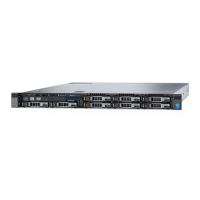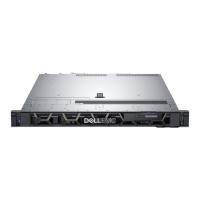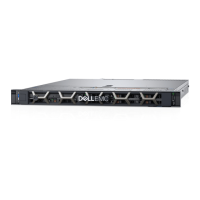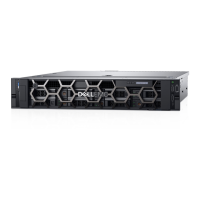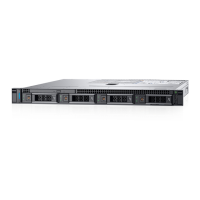3 Check the appropriate indicator on the NIC connector:
• If the link indicator does not glow, check all cable connections.
• If the activity indicator does not glow, the network driver les might be damaged or missing.
Remove and reinstall the drivers if applicable. See the NIC's documentation.
• If applicable, change the autonegotiation setting.
• Use another connector on the switch or hub.
4 Ensure that the appropriate drivers are installed and the protocols are bound. See the NIC's documentation.
5 Enter the System Setup and conrm that the NIC ports are enabled on the Integrated Devices screen.
6 Ensure that the NICs, hubs, and switches on the network are all set to the same data transmission speed and duplex. See the
documentation for each network device.
7 Ensure that all network cables are of the proper type and do not exceed the maximum length.
If all troubleshooting fails, see Getting Help.
Troubleshooting a wet system
CAUTION: Many repairs may only be done by a certied service technician. You should only perform troubleshooting and simple
repairs as authorized in your product documentation, or as directed by the online or telephone service and support team.
Damage due to servicing that is not authorized by Dell is not covered by your warranty. Read and follow the safety instructions
that are shipped with your product.
1 Turn o the system and attached peripherals, and disconnect the system from the electrical outlet.
2 Remove the system cover.
3 Remove the following components from the system:
• hard drives
• hard-drive backplane
• USB memory key
• hard drive tray
• cooling shroud
• expansion card risers (if present)
• expansion cards
• power supply unit(s)
• cooling fan assembly (if present)
• cooling fans
• processor(s) and heat sink(s)
• memory modules
4 Let the system dry thoroughly for at least 24 hours.
5 Reinstall the components you removed in step 3.
6 Install the system cover.
7 Turn on the system and attached peripherals.
If the system does not start properly, see Getting Help.
8 If the system starts properly, turn o the system, and reinstall all the expansion cards that you removed.
9 Run the appropriate diagnostic test. For more information, see Using System Diagnostics.
If the tests fail, see Getting Help.
98
Troubleshooting your system

